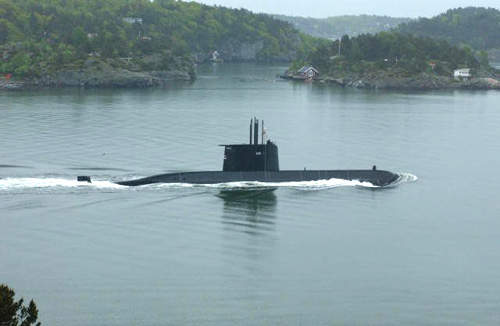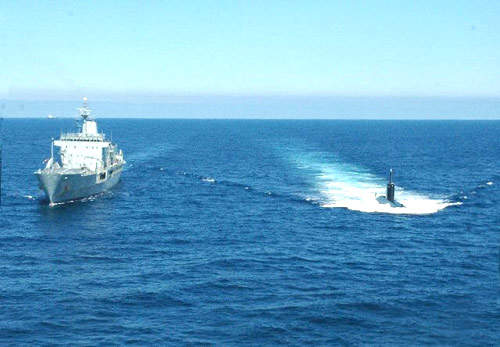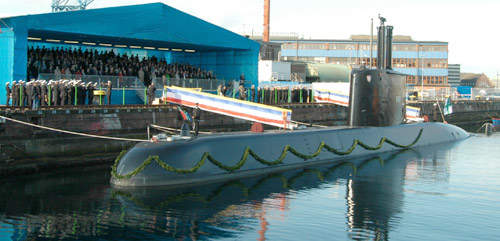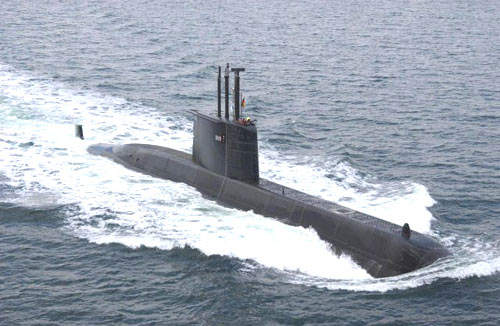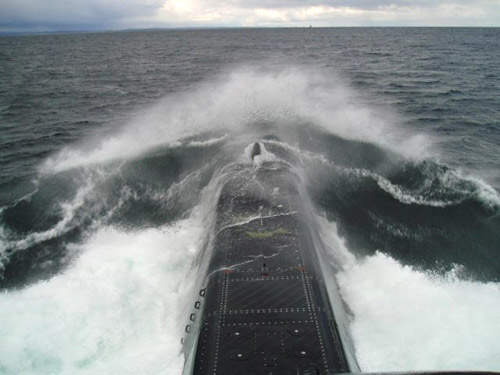South Africa placed a contract for three Type 209/1400 submarines in July 2000 on Howaldtswerke-Deutche Werft (HDW) and Thyssen Nordseewerke. The Type 209/1400 displaces 1,450t surfaced and 1,600t dived. The Manthatisi Class submarines replace the French-built Daphne Class submarines, SAS Spear, SAS Assegai and SAS Umkhonto that were decommissioned in 2003.
The first submarine, SAS Manthatisi (S101), was built by Howaldtswerke at Kiel. It was launched in June 2004 and commissioned in November 2005. The second and third submarines were built by Thyssen Nordseewerke in Emden. The SAS Charlotte Maxeke (S102) was launched in May 2005 and commissioned in March 2007. The third submarine, SAS Queen Modjadji (S103), was launched in 2006 and commissioned in May 2008.
SAS Manthatisi, was built by Howaldtswerke at Kiel."
The submarines’ homeport is Simon’s Town naval base in Cape Town.
The submarines are named after powerful South African women. SAS Manthatisi is named after the female warrior chief of the Batlokwa tribe. SAS Charlotte Maxeke is named after the female political activist who campaigned for equality in the early 20th century. SAS Queen Modjadji is named after the South African rain queen.
Type 209 submarine international variants
12 countries operate the Type 209 submarine in five variants. The suffix denotes the tonnage displacement of the submarine: Type 209/1100 in service with the Hellenic Navy; Type 209/1200 (Greece, Turkey, Argentina, Peru, Columbia, Venezuela, Indonesia, South Korean Chang Bogo Class), Type 209/1300 (Ecuador), Type 209/1400 (Turkey, Chile, Brazil, Greece and South Africa) and Type 209/1500 (India).
Manthatisi Class performance
The submarine has a crew of 30. The hull has a length of 62m, breadth of 7.6m and height of 5.8m. It has a maximum diving depth of 250m.
The Type 209/1400 submarine has a maximum speed of 10kt surfaced and 22kt dived.
Command and control
The Atlas Elektronik ISUS 90 integrated sensor underwater system provides fire control for the torpedoes. In addition to automatic fire and weapon control, it performs automatic sensor management as well as navigation and support functions.
Weapons
There are eight 533mm bow torpedo tubes and the submarine can carry up to 14 torpedoes.
Sensors
The submarine is fitted with a non-hull-penetrating mast supplied by Carl Zeiss Optronics. The mast integrates an optronic sensor with a high-definition resolution colour TV camera and third generation thermal imager. The cameras are gyroscopically stabilised in elevation and azimuth.
The sensor assembly is installed in a retractable unit outside the pressure hull of the submarine. The observation and operation of the mast are controlled on a console. The optronics mast system contains fully automatic functions for very fast surveillance and observation so the period of mast exposure above the surface is extremely short.
The surface search radar operates at I-band. The sonar suite includes an Atlas Elektronik CSU 90 hull-mounted passive and active search-and-attack sonar and flank sonar arrays.
Countermeasures
The submarine is equipped with a Saab Grintek Avionics electronic support measures system.
The submarine’s ELINT electronic intelligence system is the Saab S/UME-100 tactical electronic support measures which provides electronic intelligence analysis and amplitude direction finding capability.
The S/UME-100 comprises the ESM antenna, the radar warning receiver antenna, a signal distribution unit and an electronic warfare controller.
The S/UME-100 tactical ESM antennas interface to the optronics mast and attack periscope.
Propulsion
The submarines are fitted with a diesel electric propulsion system based on four MTU 12V 396 diesel engines delivering 2.8MW, with four alternators and one Siemens 3.7MW motor, driving a single shaft.


